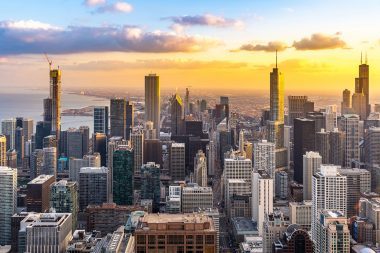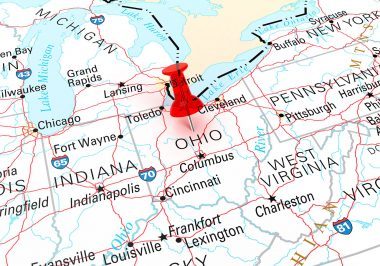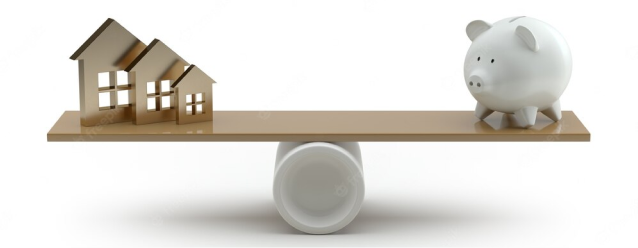Top blog articles
There are many types of roof trusses. A universal structure for your home that has its own established designs. Depending on the material, model, and utility it will be a good choice over traditional structures such as rafters.
What is it?
A truss is a structural element composed of a set of slender elements that form interconnected triangles by means of nodes. The fact that they are triangles is that they distribute forces better and are more resistant than other geometrical figures. This network of interconnected triangles forms a single structure. They are commonly used in bridges, towers, sheds, and roofs.
How do the trusses work?

This structure works only in tension and compression. Due to the network of triangles, no bending or shearing occurs. Therefore, it is easier to calculate and construct, providing lightness and strength.
Truss roofs
Knowing the types of trusses is useful when making a roof, these structural elements are so common and universal that many structures have their own names. But before we see how many types of truss roofs there are, let’s see how they work.
Tension and compression
the elements that compose the truss are slender and rigid, these elements work under two types of forces: tension when the element is stretched and compression when an element is “squeezed” or compressed. They support vertical and horizontal loads.
Trusses work as follows: a section at the top undergoes compression, while the bottom section undergoes tension. According to the type of truss, there will be compression, tension, and non-loaded elements.
Trusses are generally used to span long distances (bridges or roofs) that cannot be bridged by a solid beam. They reduce the weight of a structure without losing strength, reduce deflection and support heavy loads.
Types of roof trusses
There are some typical and standardized frameworks, worldwide, i.e. you can find them in any structural book, and they are the ones described below
Simple truss
It is a simple triangle, commonly called a rafter roof.
King post truss
Usually made of wood, and is the truss commonly used on the roofs of houses. Covers approximately 6-8m
Queen post truss

It is similar to the king truss but in this case, its coverage is greater with a coverage of 10m.
Warren truss
It has fewer members than the Pratt truss and has diagonal members that are alternately in tension and compression, forming equilateral triangles alternating up and down.
Pratt truss
Also called an N truss. The Pratt truss is for long spans, ranging from 20m to 100m, e.g. aircraft winches. In a Pratt truss, vertical elements are used for compression and horizontal elements for tension. It implies that the diagonal elements work with gravity load.
Fan truss
Have struts supported on their feet by a common suspension member from which they radiate as if fanning out
North light roof truss
Named for maximizing the benefit of natural daylighting through the use of north-facing glazing, it is used in short spans. At the top of the truss, another perpendicular truss is usually installed to create a column-free space.
Raised heal roof truss
These trusses are higher than other types of trusses, allowing better ventilation and illumination. This makes it the preferred choice for intelligent buildings.
Parallel chord roof truss
This type of truss is used when a steeply pitched vaulted interior is desired. The top and bottom chords are identical.
Scissor of truss
Used in cases of vaulting a cathedral ceiling. The inclination of the lower chord comes from the inclination of the upper chord, the span, and the height of the heel. One way to make it proportional is to slope the bottom chord half of the top chord.
Materials often used in roof trusses
In any project, the roof is one of the main and important elements. It is important that you know the benefits of each of the truss roofing materials.
Timber roof trusses

Wood is a material that has transcended antiquity, making it a versatile, noble, and durable material
Flexibility
Is compatible with other materials such as concrete, steel, composites such as reinforced concrete, etc. Long spans can be built with this material and not involve the integrity of the structure.
Economical
It is one of the most economical materials compared to steel, it is not necessary to use heavy machinery for its installation and its cost on site is low.
Resistant
Wood has excellent resistance, which makes it a perfect material for a truss roof, and its durability, with good care, is high.
Aesthetics
Wood is always a special element in decoration, if it has an architectural design, it will be part of the decorative element.
However, the disadvantages of wood are: in case of fire it will collapse the roof as it is a flammable material. It is heavy compared to steel, for example.
Steel roof trusses
Steel is a noble metal, just like concrete, and it is one of the most used materials in construction. It can have infinite uses because even its factory scrap is useful. It is used as a profile to build roofs, sheds, bolts, nuts, mechanical parts, dishwashers, etc. All this depends on its carbon content and grade.
Facility
Such as in installation and maintenance. It is not labor intensive and maintenance is low. However, inspection should be recurrent.
Resistance
It has greater resistance and lightness compared to wood. It is resistant to humidity (with previous preparation) and avoids the appearance of fungus and mold, unlike wood which can attack by plague and humidity with time.
Fire resistant
One of the main advantages of steel in general is its resistance to fire. In addition to its ductility and toughness, it can deform without completely collapsing the structure, as happened with the Cologne Cathedral in Germany.
Some disadvantages of steel trusses are their transportation. Being prefabricated elements, their transportation is complicated. Compared to wood, it does not support as much weight (loads) as, for example, a concrete or tile roof (involves asphalt mantle). Extensive spans (distances to cover) increase the cost and design.
Aluminum roof trusses
Aluminum has similar properties to steel, but its main property is that it is one-third lighter than steel. It is more elastic and because it is lighter, it can travel longer distances.
Although it has some beneficial properties, aluminum is not stronger than steel, it deforms more easily and its conductivity is high. This makes it a material that is not as efficient as steel or wood for large roofs.
How much does it cost to frame roof trusses?
Knowing the different costs will help you to build a good budget thinking in three key factors: economy, resistance, and durability.
Cost of frame per square foot
The price range for a grid roof per square foot is $10 to $12 depending on the type of material and type of truss used. This price already includes labor and materials.
Roof framing material cost
The cost of materials is usually between 3 to 5 dollars for wood and 7 to 9 dollars for steel. Steel trusses are more expensive than wood and aluminum.
Roof framing price by type
The cost of a truss ranges from $50-500 per truss. This cost depends on the size, type of truss, materials, and installation. For example, a queen post is between $50-100 for a single frame. A fan is between $100-270 and a scissor truss is $200-300.
Trusses are a very old, useful, and versatile structural element, which can be your best option to cover your house if you are planning to build one. You have so many types of roof trusses to choose from.
It is a type of roofing that can bring not only strength, durability, and economy but also an aesthetic and unique sense to the house.
Read more: Barge rafter











Your opinion matters, leave a comment